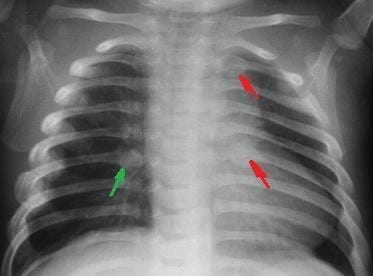
Rib fractures are cracks or breaks in the bones of one or more ribs. Because the ribs house the lungs and heart, it is critical to get these injuries checked immediately by a doctor. Since the ribs expand during inhalation, it is critical to maintain good breathing despite the pain, to prevent the lungs from not filtering and thus developing infections. Protecting the ribs with proper diet and careful activity can help prevent rib fractures from occurring.
The Malady:
Rib Fracture
The Facts:
A rib fracture is a break or crack in one of the 12 ribs. The ribs are connected the the thoracic spine vertebrae in the back, and serve to protect the vital organs beneath them, such as the heart, lungs, and diaphragm. When a fracture occurs, it is critical to make sure that none of these organs have sustained damage. It is important to seek immediate medical attention if you feel any of the symptoms of a fracture.
The Symptoms:
You will usually feel a sharp pain around the spot of the fracture that can feel diffuse to within several inches of the damaged area. Pain can occur with activities that expand the rib cage, such as breathing or coughing, or with any jarring motion such as jumping or running.
What is Happening:
Rib fractures usually occur as a result of blunt trauma force to the rib cage. This can occur from a projectile (such a baseball), a fall, or a car crash. The rib usually fractures at its weakest point, around the angle or bend. The most common rib fractures happen in the middle ribs, although they can occur anywhere.
Why Is This Happening:
Fractures can be either mechanical or pathological in nature. In a mechanical fracture, the patient experiences a severe blunt trauma injury or crush, which creates a crack in otherwise healthy ribs. In pathological fractures, which typically happen to patients with low bone density caused by bone cancer or osteoporosis, only a small amount of force is required to crack the already weakened bone.
Lifestyle Adjustments:
One important adjustment to make is to make sure your diet is full of vitamins and minerals that encourage bone health. It is critical to consume sufficient calcium, whether from food or supplements. Some foods that are rich in calcium include dairy, yogurt, fish, and certain vegetables such as kale.
Prevent It
1) Maintain a healthy diet rich with vitamins and minerals
2) Do not play contact sports without sufficient practice to ensure proper technique
3) Wear appropriate padding around the rib cage if you are engaging in activities that lend themselves to traumatic contact
Fix It
1) It is critical to stay active during this process. Bed rest is NOT recommended because it can lead to complications such as pneumonia, which can be prevented by simply moving around. Try to get up and walk at least 50 feet every hour you’re awake. Avoid laying down too much; instead try sitting up in a chair when awake if not moving around.
2) Breathing and coughing exercises should be initiated immediately to prevent infection. You may squeeze a soft pillow against your chest and breath slowly and deeply (to pain tolerance). Take 10 deep breaths. You must also attempt to gently cough 2 or 3 times to clear the lungs of infection. Do this every 2 hours while awake.
3) Apply ice pack to the injured area 15 minutes on 45 minutes off every hour you’re awake for the first week after injury, then 3-4 times a day thereafter until pain dissipates.
